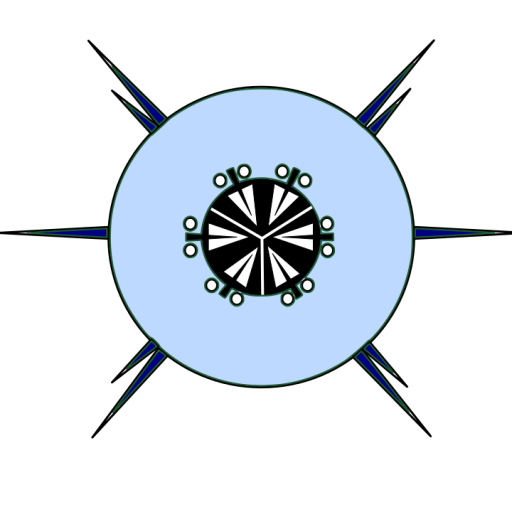This project was financed by a Conicyt fund designed to bring overseas expertise to Chile for both teaching and research purposes. In the case of our project we invited Dr. Andreas Schmidt-Rhaesa, from the University of Hamburg, to Chile for a two month stay. This project was organised by Dr. Juan Cañete from the Universidad de Magallanes in Punta Arenas, with the collaboration of Dr. Javier Sellanes from the Universidad Católica del Norte in Coquimbo and myself (Dr. Matthew Lee). Here I will concentrate on the work Andreas and I did here in the Region de Los Lagos.
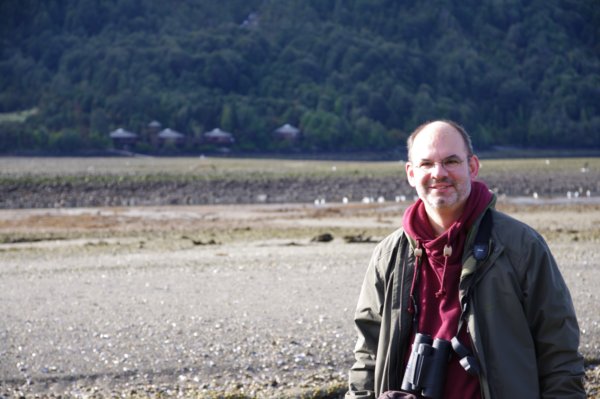
Dr. Schmidt-Rhaesa spent the first two weeks of October 2017 here in Puerto Montt at the Centro i~mar. Our sampling was qualitative in the main and we worked with live material with the objective of finding new species. Given the taxonomic expertise of Andreas we focused manly on the soft bodied fauna, particularly the Gastrotricha, which I know to be diverse and abundant here in Chile even though there are currently no published papers on the Chilean gastrotrichs. During the stay we visited a variety of marine habitats, including the tidal-flats at Coihuin and Canal Tenglo, the fjord/estuarine habitat at Huinay in the Comau fjord, and the exposed coast at Caleta Estaquilla.
In order to study the live fauna we applied the anaesthetisation method using isotonic magnesium chloride. The faunal groups we examined were the Gastrotricha, Aceola, Turbellaria, Ciliata, Rotifera, Kinorhyncha, Tardigrada, Polychaeta, Sipuncula, and a few Nematoda. Within the Gastrotricha we found the following genera: Cephalodasys (Coihuin), Lepidodasys (Coihuin), Macrodasys (Coihuin, Canal Tenglo), Mesodasys (Canal Tenglo), Tetranchroderma (Coihuin), Turbanella (Huinay, Caleta Estaquilla) and Xenotrichula (Coihuin, Caleta Estaquilla). The Macrodasys sp. showed considerable variation in the posterior end with respect to the number and arrangement of the adhesive tubes. Whether there is a single species of Macrodasys with significant variation in the morphology of the posterior end or a number of very similar species remains to be determined. Aceola are now considered distinct from the rest of the flat worms (Turbellaria). We found Aceola at both Coihuin and Huinay, a video of the Coihuin specimen is available below. Turbellarians were found at all the sites, but as this group has to be studied live we barely scratched the surface of the diversity present in the region. Kalyptorhynchia were found at Coihuin, Canal Tenglo and Huinay. At Caleta Estaquilla the Otoplanidae were the dominant turbellarians in the resurgence zone, something which is typical of exposed sandy-beaches along the coast of Chile. One interesting find from Huinay was a “turbellarian” with a tail which so far we have been unable to identify (see photo below). Ciliates are extremely common in sediments with a high diversity but as with many other groups of interstitial fauna the are poorly studied. We found that the seawater ice technique worked well for extracting ciliates, though not for most of the other meiofauna. Rotifera are fairly rare in marine sediments though we found individuals at Coihuin and Huinay, the video below shows a member of the genera Colurela. There are a number of Kinorhyncha species in Chile, the best known is Cateria styx which is found in exposed beaches along the length of the Chilean coast. At Coihuin we found a single specimen of Echinoderes. Marine tardigrades are another group for which there are currently no published papers despite them being fairly common, the picture below shows a specimen of Batillipies from Coihuin. A large number of polychaetes were found in the samples we collected. Interstitial Polychaeta we found included Polygordius at Coihuin, Canal Tenglo and Huinay, Nerillidae at both Coihuin and Huinay, and Saccocirrus and Hesionidae at Caleta Estaquilla. At Huinay one surprising finding in the subtidal sediment was a meiofaunal sized sipunculid. Currently we have yet to determine if this is a genuine meiofaunal species or the juvenile of a large macrofaunal species. Finally, the Nematoda were not the focus of this study as they are one of the better known meiofaunal groups in Chile, but for me one of the highlights was the confirmation that one small grub like species that I see frequently is from the family Persianidae genera Manunema. This was thanks to an old paper in German that Andreas was able to obtain for me.
Further discoveries and comments will be posted as they are made.
Sites
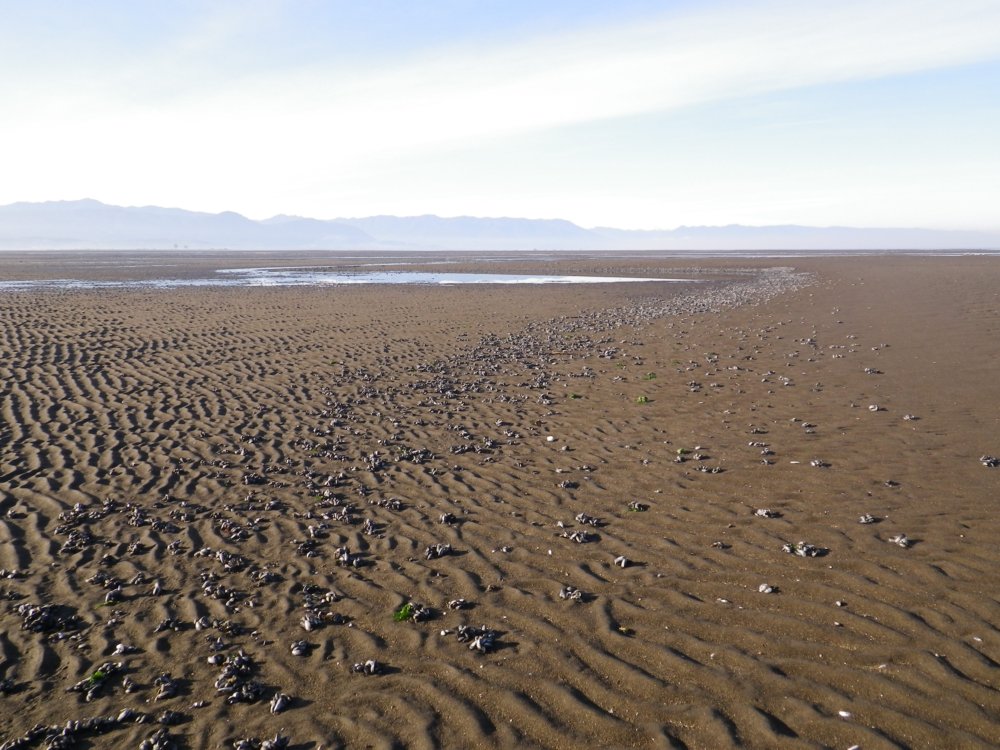
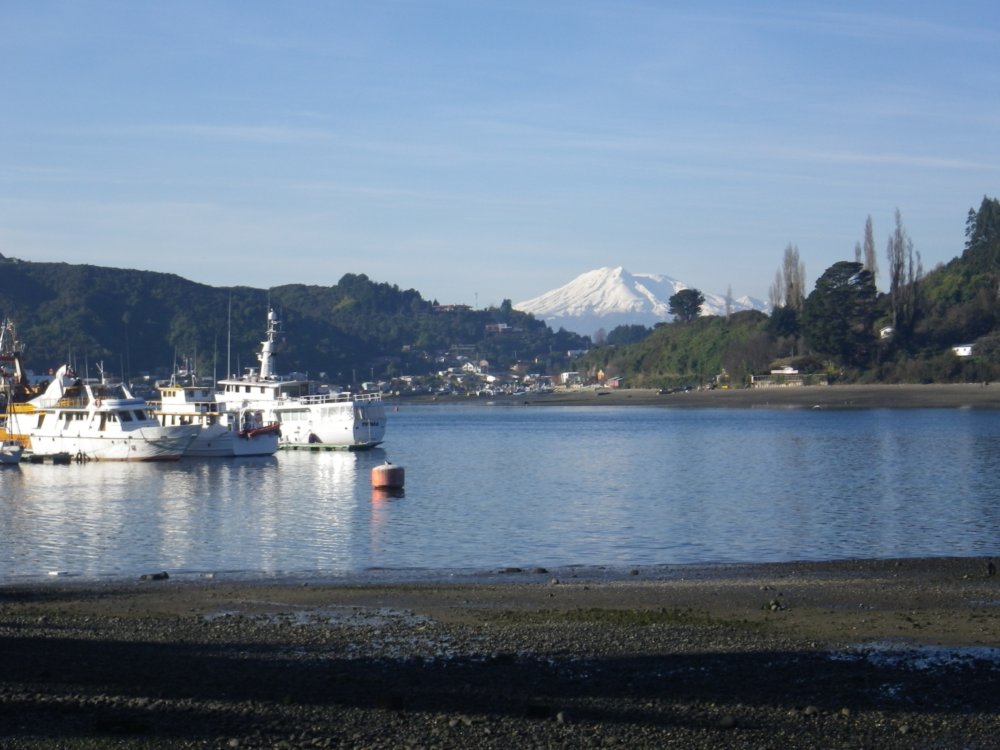

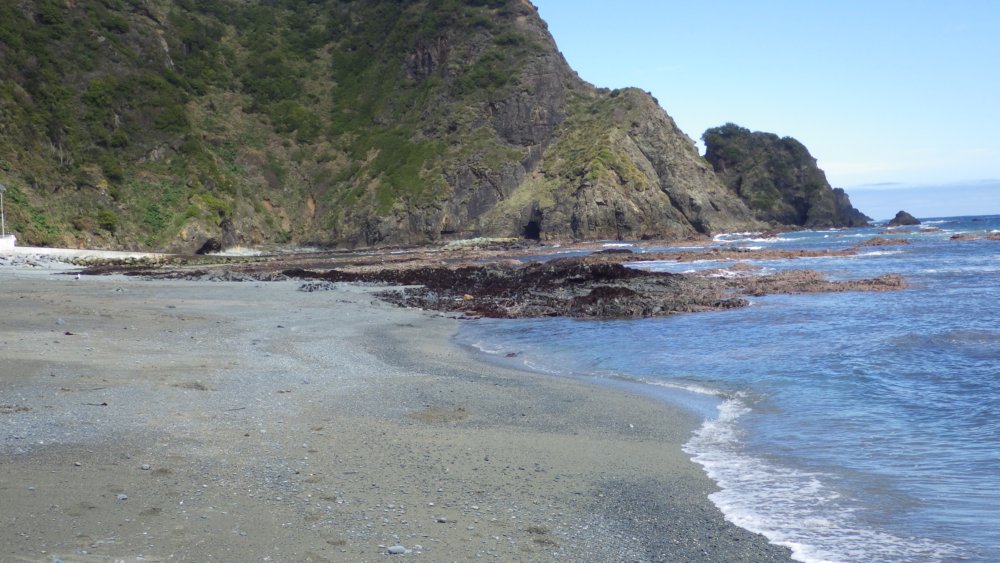
Gastrotricha

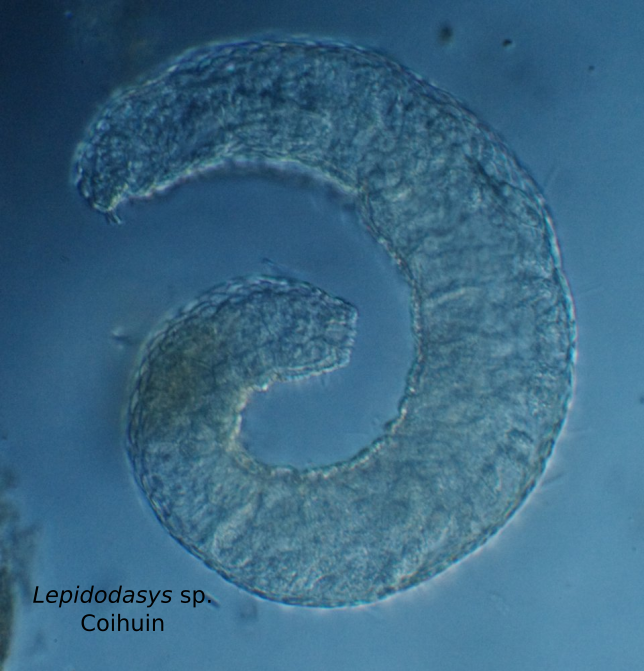
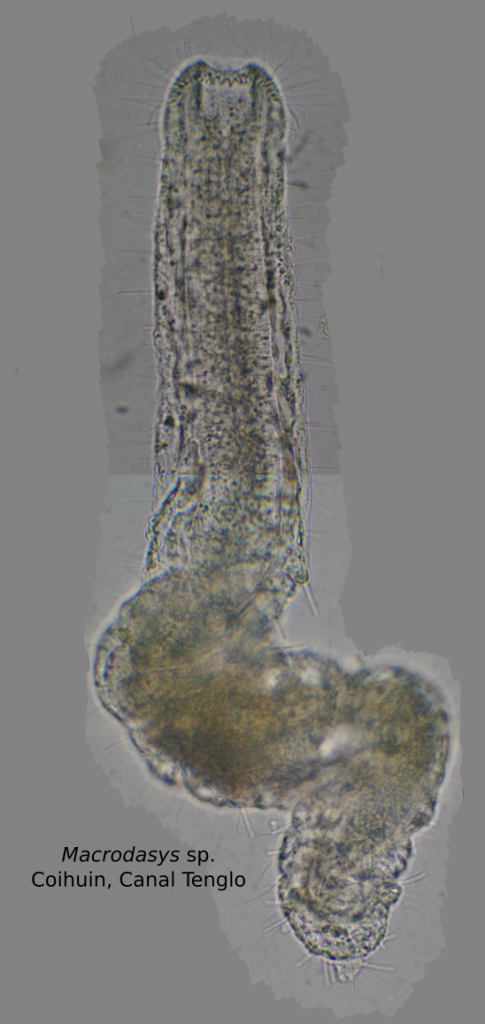
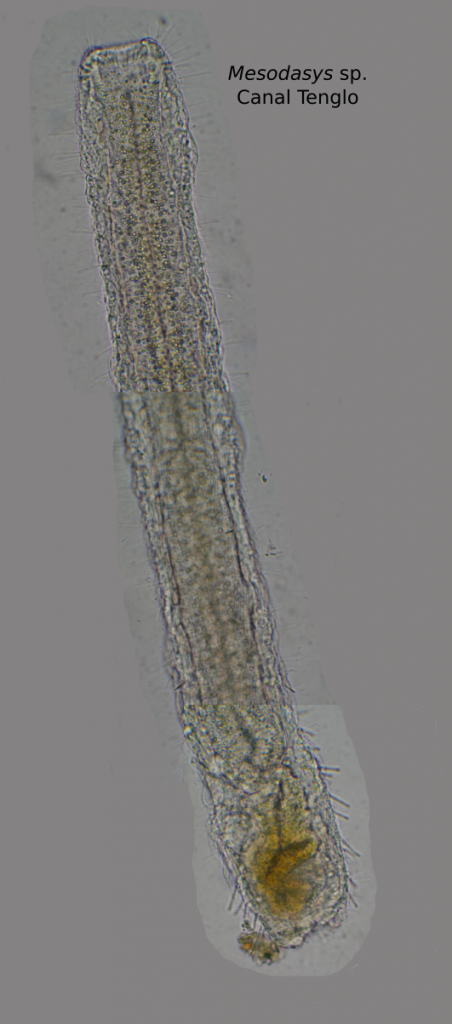
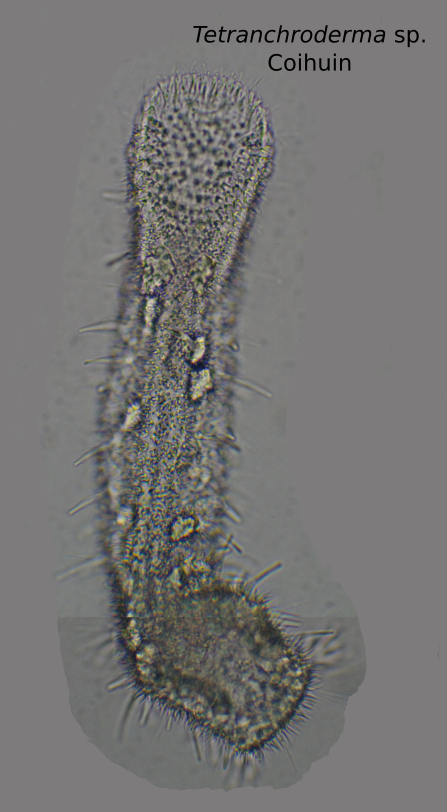
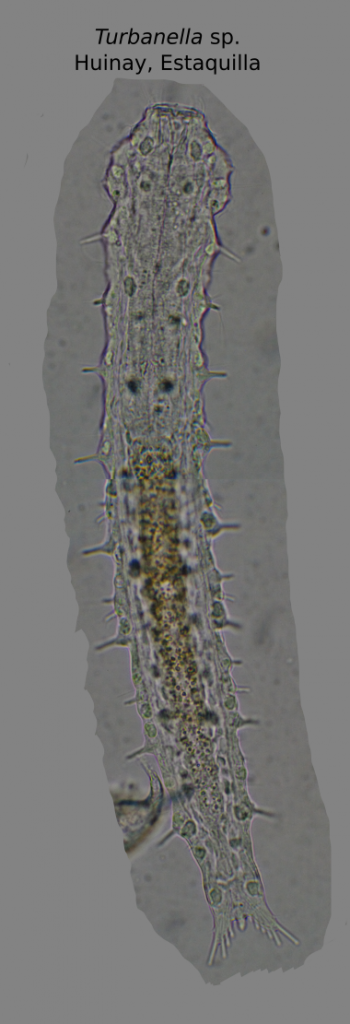

Aceola
Turbellaria
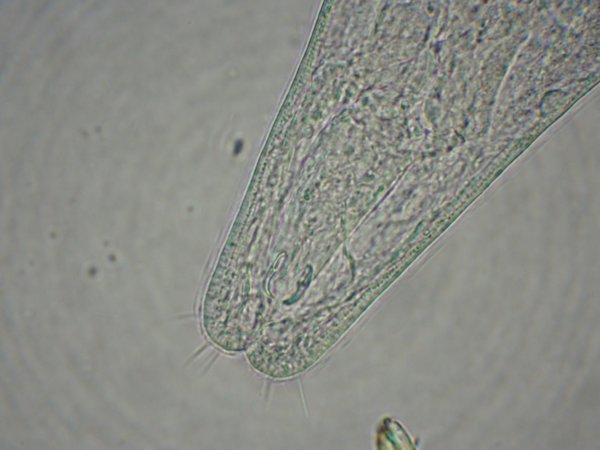

Ciliata
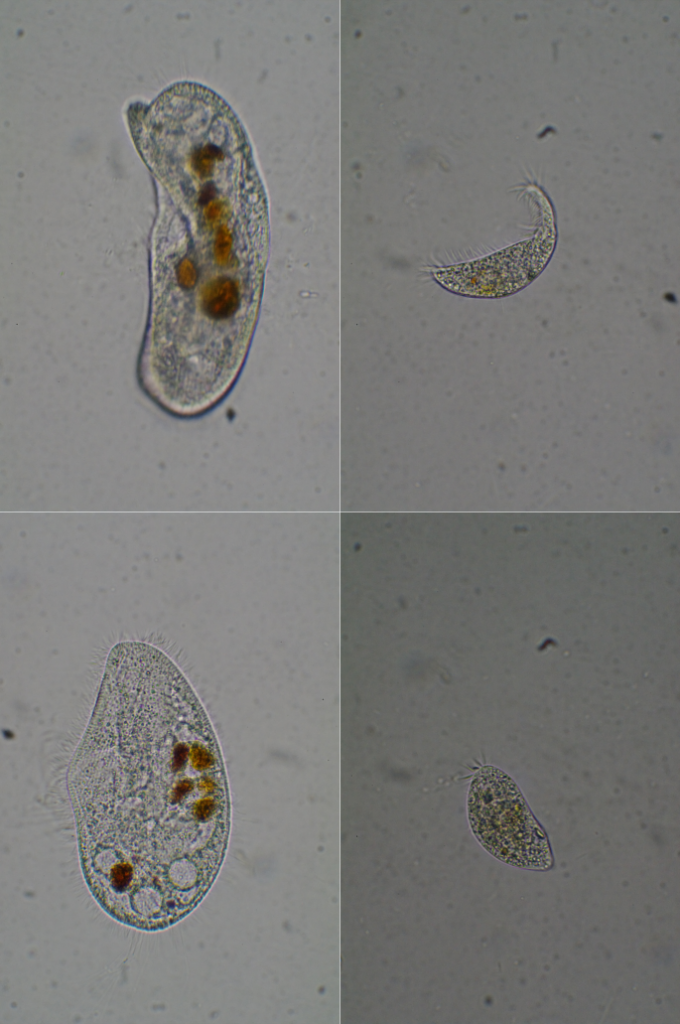
Rotifera
Kinorhyncha
Tardigrada
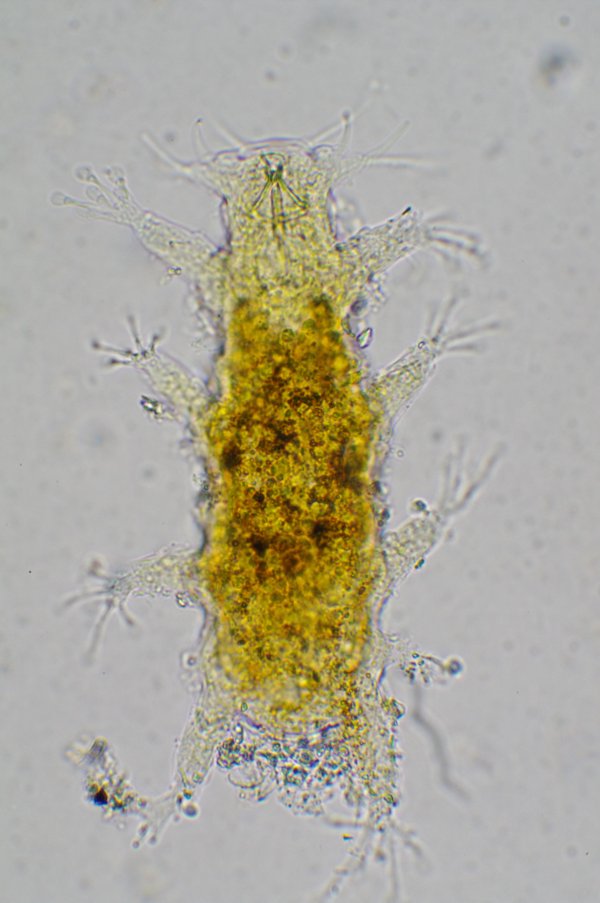
Polychaeta
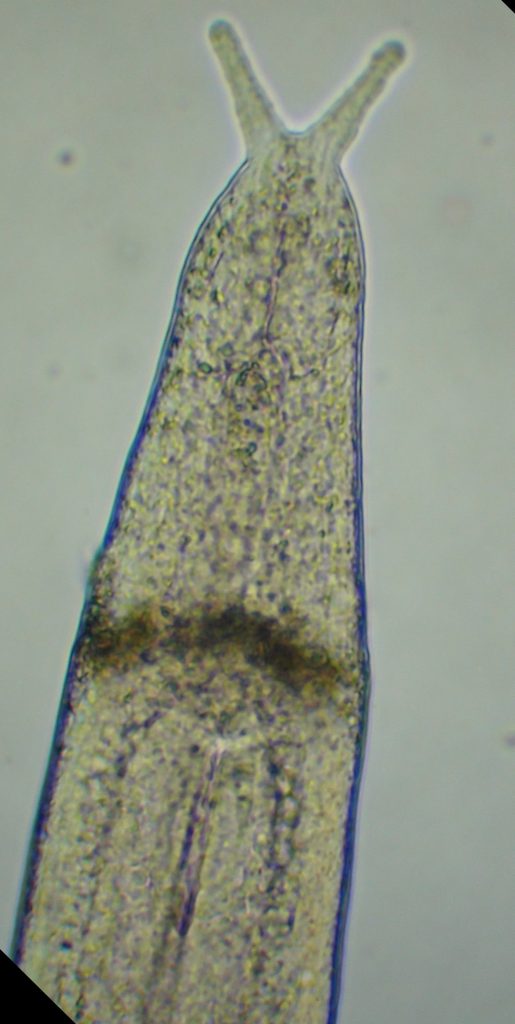
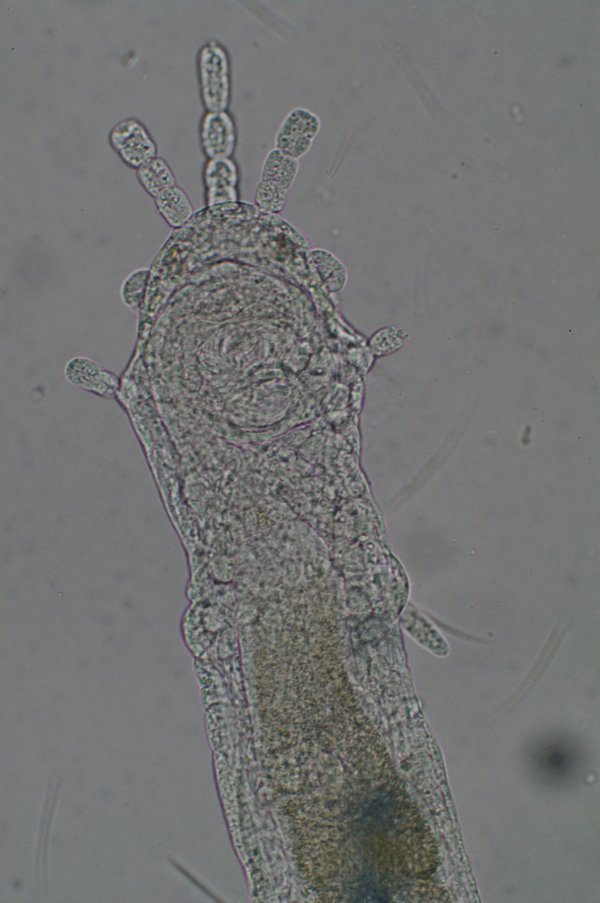
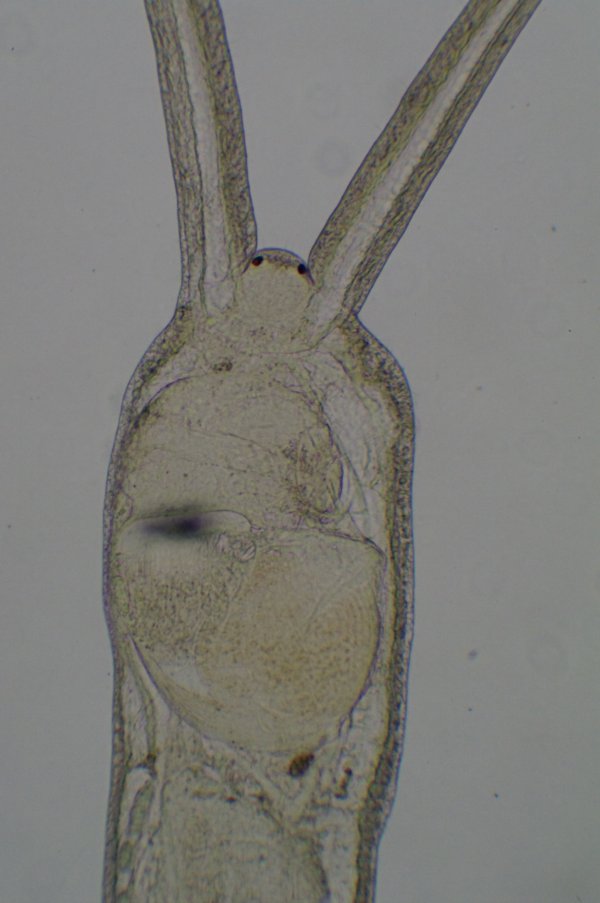

Sipuncula
Nematoda

